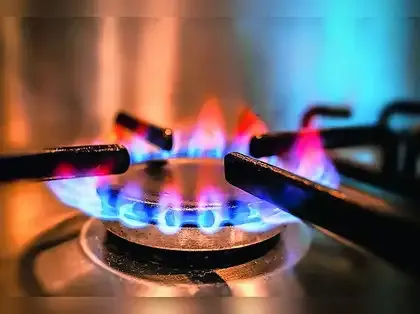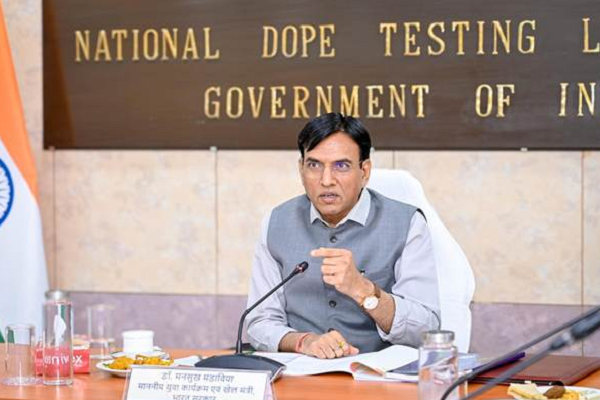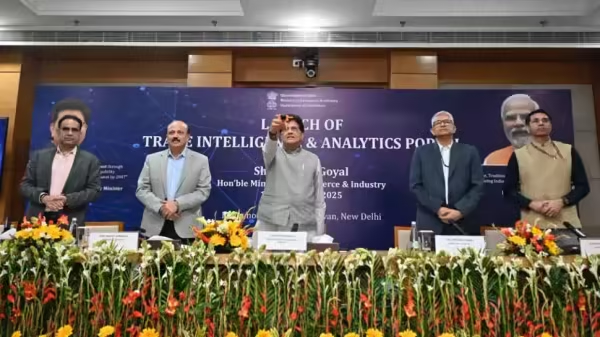
Listen to this article in summarized format
Loading...
×In November 2022, a committee set up by the petroleum and natural gas ministry to review gas pricing presented its recommendations after extensive consultations with various stakeholders.
The country followed many pricing regimes in 2022, depending on when fields were allotted and under what conditions. ONGC and OIL - producing some 70% of the country's gas - were allotted fields. They produced administered price mechanism (APM) gas, price of which was fixed based on the average price of 4 international gas fields over 12 mths, with a 3-mth lag.
Using average price over 12 mths with a 3-mth lag may undermine the purpose of relating domestic price to international price. A more realistic method would be to use price of a recent month with minimal lag.
For a few years, the APM price didn't cover cost of production by ONGC and OIL. The committee recommended the price be fixed on the import price of Indian crude basket of previous month, and revised every month. But it also recommended that a floor price of $4.00/MMBTU and a ceiling price of $6.50/MMBTU be fixed, and that the ceiling price be revised upward by $0.50/MMBTU every year.
The impact of these recommendations is evident in the price of APM gas. In October 2025, the domestic price was $6.96/MMBTU, and the ceiling price, $6.75/MMBTU. Of course, PNG and CNG users who get APM gas have to pay a higher price. Yet, it's cheaper to use gas than alternatives such as LPG or diesel. Also, ONGC and OIL make profits, parts of which accrue to government rather than to consumers.
For other gas fields, like high-pressure high-temperature (HPHT) gas fields, the committee recommended granting complete pricing and marketing freedom by January 1, 2026, through removal of the ceiling price. Current market environment presents an ideal opportunity to remove the ceiling price for gas produced from deep-water, ultra-deep-water and HPHT fields, as international gas price volatility has moderated in line with the committee's 2022 expectations.
The committee had anticipated that global energy crisis and market instability caused by the Russia-Ukraine conflict would ease within 3-5 yrs as new LNG capacities came online. With international LNG prices now stabilised, this is the right time to complete the reform by removing the HPHT ceiling and deregulating APM gas prices even ahead of 2026.
All domestically produced gas, other than from nomination blocks, has been granted full pricing and marketing freedom. In contrast, HPHT fields, which account for about 30% of domestic gas production and produce over 3x gas than other fields with pricing freedom, remain subject to a different price ceiling, despite being technically complex and high-cost to develop and operate.
Ceiling price for HPHT fields is determined on the basis of the lowest landed price of alternate fuels - fuel oil, a basket of substitute fuels (coal, naphtha, fuel oil), and LNG, thereby limiting the ceiling to the lowest of these alternatives at any given time. As consumers in a free market are not likely to pay more for gas than the cost of substitutes and some premium for convenience of gas use, the ceiling price serves little practical purpose.
Domestic gas from field having full pricing and marketing freedom has consistently been priced below imported LNG, and at a significant discount to international LNG prices. This, even during extreme volatility caused by the Russia-Ukraine conflict, demonstrating that the market is self-regulating, rendering a government-imposed ceiling price unnecessary.
Decontrolled pricing can also facilitate development of a localised price discovery mechanism, support efficient use of gas and growth of a competitive domestic gas market. The committee had, therefore, recommended complete liberalisation of gas, other than APM, by January 1, 2026, and of APM from January 1, 2027.
The writer is former member,Planning Commission, and headedthe gas pricing reforms committee
The country followed many pricing regimes in 2022, depending on when fields were allotted and under what conditions. ONGC and OIL - producing some 70% of the country's gas - were allotted fields. They produced administered price mechanism (APM) gas, price of which was fixed based on the average price of 4 international gas fields over 12 mths, with a 3-mth lag.
Using average price over 12 mths with a 3-mth lag may undermine the purpose of relating domestic price to international price. A more realistic method would be to use price of a recent month with minimal lag.
For a few years, the APM price didn't cover cost of production by ONGC and OIL. The committee recommended the price be fixed on the import price of Indian crude basket of previous month, and revised every month. But it also recommended that a floor price of $4.00/MMBTU and a ceiling price of $6.50/MMBTU be fixed, and that the ceiling price be revised upward by $0.50/MMBTU every year.
The impact of these recommendations is evident in the price of APM gas. In October 2025, the domestic price was $6.96/MMBTU, and the ceiling price, $6.75/MMBTU. Of course, PNG and CNG users who get APM gas have to pay a higher price. Yet, it's cheaper to use gas than alternatives such as LPG or diesel. Also, ONGC and OIL make profits, parts of which accrue to government rather than to consumers.
For other gas fields, like high-pressure high-temperature (HPHT) gas fields, the committee recommended granting complete pricing and marketing freedom by January 1, 2026, through removal of the ceiling price. Current market environment presents an ideal opportunity to remove the ceiling price for gas produced from deep-water, ultra-deep-water and HPHT fields, as international gas price volatility has moderated in line with the committee's 2022 expectations.
The committee had anticipated that global energy crisis and market instability caused by the Russia-Ukraine conflict would ease within 3-5 yrs as new LNG capacities came online. With international LNG prices now stabilised, this is the right time to complete the reform by removing the HPHT ceiling and deregulating APM gas prices even ahead of 2026.
All domestically produced gas, other than from nomination blocks, has been granted full pricing and marketing freedom. In contrast, HPHT fields, which account for about 30% of domestic gas production and produce over 3x gas than other fields with pricing freedom, remain subject to a different price ceiling, despite being technically complex and high-cost to develop and operate.
Ceiling price for HPHT fields is determined on the basis of the lowest landed price of alternate fuels - fuel oil, a basket of substitute fuels (coal, naphtha, fuel oil), and LNG, thereby limiting the ceiling to the lowest of these alternatives at any given time. As consumers in a free market are not likely to pay more for gas than the cost of substitutes and some premium for convenience of gas use, the ceiling price serves little practical purpose.
Domestic gas from field having full pricing and marketing freedom has consistently been priced below imported LNG, and at a significant discount to international LNG prices. This, even during extreme volatility caused by the Russia-Ukraine conflict, demonstrating that the market is self-regulating, rendering a government-imposed ceiling price unnecessary.
Decontrolled pricing can also facilitate development of a localised price discovery mechanism, support efficient use of gas and growth of a competitive domestic gas market. The committee had, therefore, recommended complete liberalisation of gas, other than APM, by January 1, 2026, and of APM from January 1, 2027.
The writer is former member,Planning Commission, and headedthe gas pricing reforms committee
(Disclaimer: The opinions expressed in this column are that of the writer. The facts and opinions expressed here do not reflect the views of www.economictimes.com.)





 Subscription
Subscription






Kirit S Parikh
Former member, Planning Commission, and headed the gas pricing reforms committee